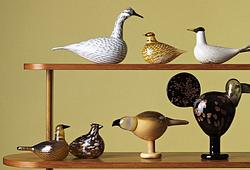Karin Mamma Andersson
'Skoldans'
Signed Karin Mamma Andersson and dated 2000 verso. Oil on panel 80.5 x 122.5 cm.
Provenance
Galleri Magnus Karlsson, Stockholm.
Lars Wetterling Collection.
Exhibitions
Konstens hus, Luleå, "Karin Mamma Andersson", 24 February - 25 March 2001.
Konstforum, Norrköping, 2002.
Literature
Ann-Sofi Noring (ed.), "Mamma Andersson", 2007, illustrated.
More information
Karin Mamma Andersson is an artist who makes her own distinct observations. Her gaze finds details that the rest of us could never imagine being the subject of a painting. She treats these details and fragments from everyday life, art history and nature with the utmost respect and gentleness. They are joined together to create maps of interior and exterior landscapes – always in the same restrained and unique colours. Using a palette upon which themes such as childhood, Northern Swedish nature, everyday life and love are laid out, she succeeds in transforming the particular into something universal – a scene for the rest of us to reflect upon. Her style of expression has been praised both nationally and internationally and she is regarded as one of Sweden’s greatest living artists. Following Mamma Andersson’s breakthrough at the Venice Biennale in 2003, she has had critically acclaimed solo shows at Moderna Museet in Stockholm (2007), and at Louisiana Museum of Modern Art in Denmark (2021), amongst other places, as well as regularly showing her work at her galleries in Stockholm, London and New York.
During the 1990s children, and their everyday environment, was a recurrent theme for Mamma Andersson. The paintings ‘Roliga Timmen’ [Funny Lesson] and ‘Klassrum’ [Classroom], as well as the painting in the auction, ‘Skoldans’ [The School Dance], all executed in 2000, are examples of this theme. The three paintings are depicted together in Moderna Museet’s catalogue from 2007, revealing the obvious relationship between the pieces. In Roliga timmen the children are found seated by a round table, the pale tabletop is massive and has colourful spots and traces of the children’s paintings on it. In the work Klassrum the reference seems to be the Swedish photorealist painter Peter Tillberg’s iconic image of a classroom ‘Blir du lönsam, lille vän?’ Will you be profitable, little friend?. And it does seem like Mamma Andersson’s children, seated at their school desks, will become ‘profitable’, as most of them are eagerly putting their hands up. What Mamma Andersson’s three paintings have in common is the fluid border between inside and outside. The rooms are opened up towards a Northern Swedish landscape, where mountains and lakes glisten on the horizon.
In Skoldans the solid surface of the table top appears to have dissolved and, like a gigantic crystal ball, created a portal into the children’s future. Spellbound, they contemplate this parallel world. In the table top’s time portal they perhaps see themselves as teenagers. In a few years they will be different people, with different proportions. Then it will be their turn to be standing around at school dances in community halls with butterflies in their stomachs and sweaty palms.
Confused, the children observe the new rituals of adult life. One of them looks like she wants to leap in and change what is happening, to move around the dancing couples on the dance floor like puppets on a string. The child is anxiously extending her hands out towards them.
In the same way that Anders Zorn, in perhaps his most famous painting Midsommardans [Midsummer Dance], tried to recreate the Swedish spirit of his time, with these three paintings Mamma Andersson is probably trying to capture the essence of the Swedish welfare society, ‘folkhemmet’, and her own childhood growing up in the northern town of Luleå.



























































